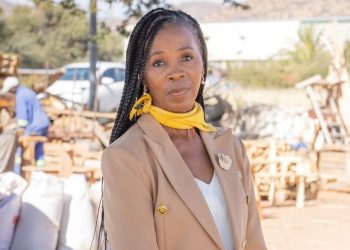
By Shariva Zender
Namibia’s marketing landscape is undergoing rapid transformation, driven by technological advances, shifting consumer behaviours and the increasing influence of global trends.
However, the unique cultural, economic and social dynamics of the Namibian market, demand that brands come up with localised strategies that resonate with its people.
In Namibia, communities value trust and campaigns that align with societal values leave a lasting impression.
Consumers are drawn to brands that contribute positively to pressing local issues such as unemployment, environmental sustainability and education, but at the same time offer a sense of authenticity and originality.
A campaign highlighting support for small-scale farmers can foster strong emotional connections and demonstrates that brands must go beyond profit-driven messaging to showcase genuine care for the audiences they serve.
The country’s rich cultural diversity and numerous ethnic groups offers opportunities for marketers to come up with campaigns that celebrate and respect local traditions, vernaculars and will resonate deeply with audiences.
For example, incorporating Oshiwambo, Damara or Nama phrases into advertisements or showcasing traditional attire and music in visuals demonstrates cultural appreciation and is sure to gain popularity.
Localisation can therefore include a mix of creative elements that extend beyond language to include unique and compelling storytelling and reflects our unique heritage.
Another avenue that has seen an increase over the last few years is the rise of mobile and social media platforms like Instagram and TikTok.
While many local brands remain skeptical of digital marketing, we cannot dispute the impact these platforms have and how many brands have mastered using them for effective campaigns.
With a median age of approximately 21 years, Namibia’s population is predominantly young.
This demographic is digitally connected, socially aware and very heavily influenced by global trends. Adopting digital marketing presents a perfect opportunity to engage with younger, tech-savvy audiences.
In the same vein, marketers and brand managers must be cognisant of digital divides by complementing online campaigns with traditional media such as radio and print media, both of which still have mass appeal and ensures inclusivity for those with limited internet access.
An integrated strategy that leverages both modern and conventional channels is therefore key to reaching a diverse audience.
Once brands have developed the blueprint, measuring the impact of these campaigns become crucial.
However, over the years, we have seen that campaign success isn’t just about vanity metrics like click-through rates or engagement online. It extends beyond profit-driven objectives and is shifting towards community impact.
Tracking actual engagement in local communities, social conversations and grassroots awareness is vital for understanding a campaign’s effectiveness where brands should consider using surveys or focus groups to gather genuine feedback from their consumers. These insights provide a more nuanced understanding of campaign resonance.
As Namibia continues to grow and modernise, marketing and brand professionals must remain agile, balancing innovation with a deep respect for local traditions. Those who succeed will not only capture market share but also play a pivotal role in shaping the country’s everchanging consumer landscape.
The future of marketing in Namibia lies in authentic storytelling, strategic adaptability and an unwavering commitment to community values. Is your brand ready to take the leap?
*Shariva Zender is a seasoned Marketing and Corporate Communications professional with over a decade of experience spanning telecommunications, FMCG, creative agency environments and regulatory industries. Known for a strategic approach and a creative mindset, Shariva has established a reputation for driving impactful marketing initiatives that align with business goals while resonating with diverse audiences.Currently serving as the Marketing and Corporate Communication Manager at the Business and Intellectual Property Authority (BIPA).











